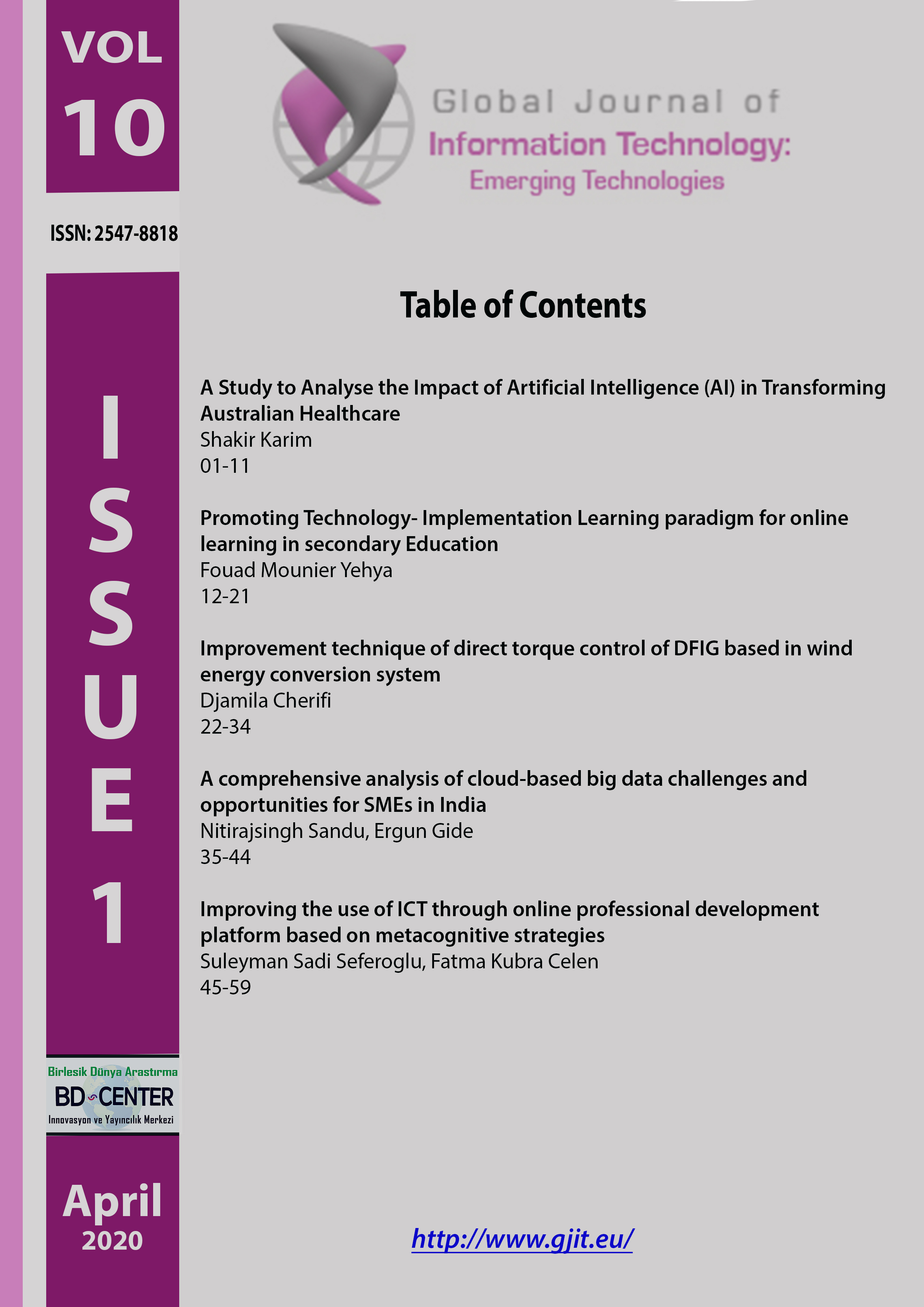A study to analyse the impact of artificial intelligence (AI) in transforming Australian healthcare
Main Article Content
Abstract
Artificial intelligence (AI) is the biggest emerging movement and promise in today’s technology world. AI, in contrast to natural (human or animal) intelligence, is intelligence demonstrated by machines. AI is also called machine intelligence,
which aims to mimic human intelligence by being able to obtain and apply knowledge and skills. It promises substantial
involvements, vast changes, modernisations and integration with and within people’s ongoing life. It makes the world more demanding and helps to make prompt and appropriate decisions with real time. This article provides a main analysis of the health industry and healthcare system in Australian healthcare that are relevant to the consequences formed by AI. This article has primarily used the secondary research analysis method to provide a wide-ranging investigation of the positive and negative consequences of health issues relevant to AI, the architects of those consequences and those overstated by the consequences. The secondary resources are subject to journal articles, reports, academic conference proceedings, media articles, corporation-based documents, blogs and other appropriate information. This study found that AI provides useful insights in the Australian healthcare system. It is steadily reducing the cost of the Australian healthcare system and improving patients’ overall outcome in Australian healthcare. AI can not only improve the affairs between public and health enterprises but also make life better by increasing efficiency and modernisation. However, beyond the technology maturity, there are still many challenges to overcome before Australian healthcare can fully leverage the potential of AI in healthcare – Ethics being one of the most critical.
Keywords: Artificial intelligence (AI), health industry, healthcare system, Australian healthcare
Downloads
Article Details

This work is licensed under a Creative Commons Attribution 4.0 International License.
Authors who publish with this journal agree to the following terms:- Authors retain copyright and grant the journal right of first publication with the work simultaneously licensed under a Creative Commons Attribution License that allows others to share the work with an acknowledgement of the work's authorship and initial publication in this journal.
- Authors are able to enter into separate, additional contractual arrangements for the non-exclusive distribution of the journal's published version of the work (e.g., post it to an institutional repository or publish it in a book), with an acknowledgement of its initial publication in this journal.
- Authors are permitted and encouraged to post their work online (e.g., in institutional repositories or on their website) prior to and during the submission process, as it can lead to productive exchanges, as well as earlier and greater citation of published work (See The Effect of Open Access).
